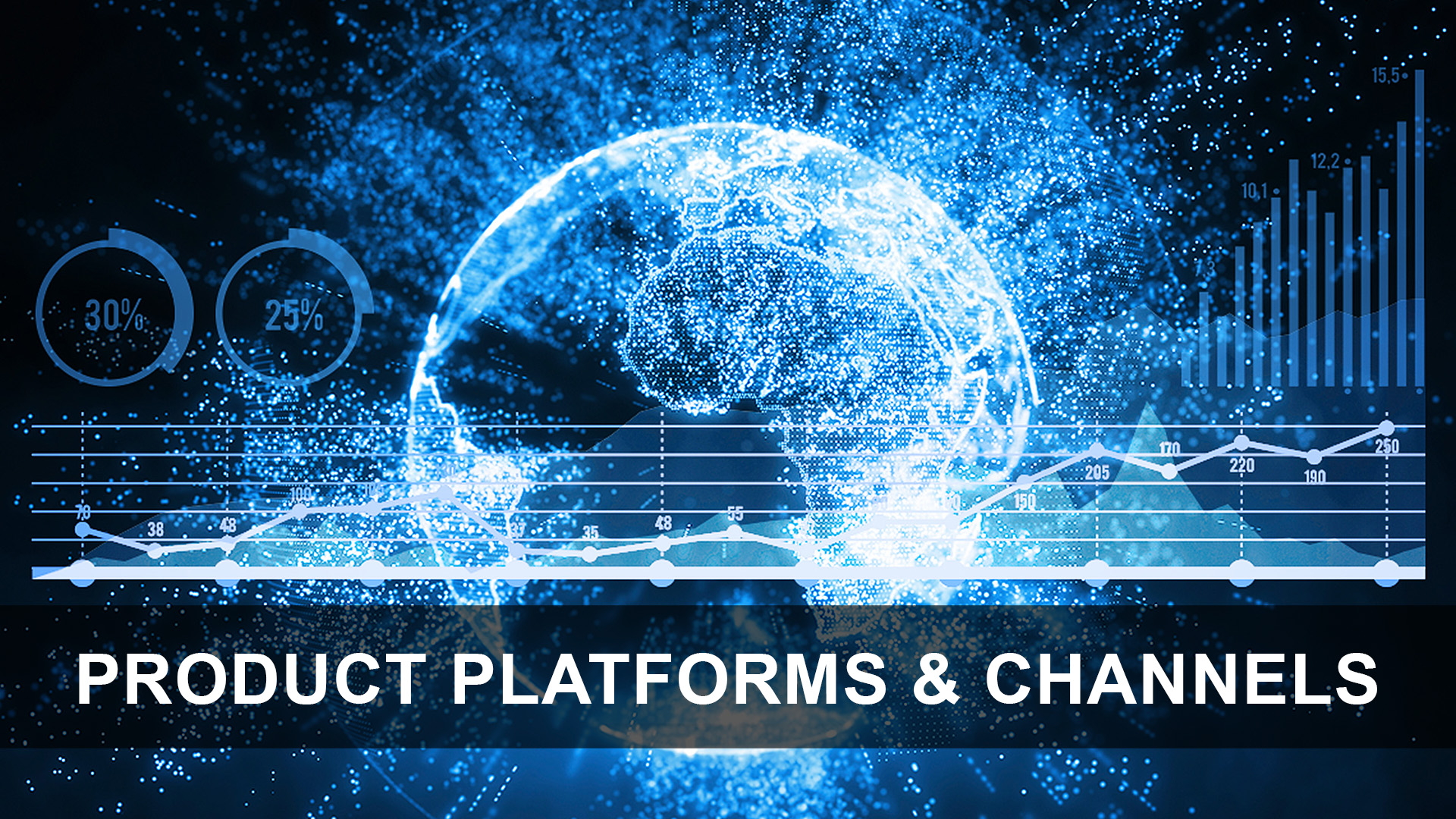Table of Contents
Overview
Exhibit 1 (Click to Enlarge)
Digital has forever changed the corporate landscape and is now vital to every industry and channel. This resonates more deeply than ever as the Fourth Industrial Revolution has created a landscape where distinctive digital capabilities is a must for both short and long-term viability. Within this new digital frontier, many companies unfortunately make the mistake of believing that digital transformation is simply a multi-channel and/or silo driven initiative in which IT creates new platforms and/or capabilities across the organization. Unfortunately, nothing could be further from the truth. To drive digital at scale, any accompanying transformation must be done with the cooperation of the entire company, as success hinges on such a digital undertaking being a cross-functional, enterprise wide undertaking. In its simplest form, digital transformation winners are those that have mastered three areas, specifically: (1) culture and organizational health (including employee engagement), (2) customer experience/service excellence, and (3) product platforms and channels (See Exhibit 2). Our proprietary approach segments these three steps into a holistic nine-step digital transformation journey, ensuring success across all key touch points within this new digital first landscape (See Exhibit 1). At completion, a company will have a distinctive digital ecosystem that is sustainable and held together by seamless omnichannel synchronization, ensuring a profitable growth engine that is viable for both the present and the future.
Our Approach to Digital Transformations
Our Approach
Our digital transformation process is a deep-rooted methodology comprised of multiple phases all created to drive significant growth, innovation, and organizational success (See Exhibits 1, 2, 4, and 5). With each digital transformation, we take a holistic approach by (1) identifying and diagnosing digital gaps, (2) creating an appropriate action plan to develop a distinctive digital ecosystem and accompanying capabilities, and (3) aiding in the implementation process to ensure a quick ramp-up period that's adopted by the entire enterprise. Our belief is that digital transformation, when implemented correctly, is a key profit driver (See Exhibit 2). Our global digital transformations have delivered significant results including but not limited to double-digit top and bottom line improvement, significant increase in employee engagement, and substantially higher customer loyalty. Specifically, we believe that to be a winner in one's digital transformation journey a company must be distinctive in nine core areas (see below).
9 Core Areas for Digital Distinction
1. Culture, innovation, and continuous improvement
2. Customer experience and service excellence
3. Data strategy and per-sonalized insights engine
4. Cloud and artificial intelligence (AI)
5. Compliance, risk manage-ment, and cybersecurity
6. Mobile, including mCommerce and apps
7. eCommerce and search capabilities
8. Social media integration, including marketing and sales
9. Omnichannel and cross-functional collaboration
As such, our trademarked digital transformation model encompasses each of these core areas. While each alone can be disruptive, together these nine core areas unlock significant growth, revolutionize old business models, spark innovation, and create new leaders. See below for a breakdown of our nine-step digital transformation journey.
Breaking Down the Digital Journey
Any successful digital transformation must begin with a defined culture that ensures (1) employee engagement, empowerment, autonomy, and inspiration, (2) corporate wide agility, (3) cutting-edge innovation, and (4) top-quartile service excellence. A written culture is merely words on paper. Without psychological ownership these words never drive change.
Today’s customer is more sophisticated than ever. However, there is typically a large “customer experience gap” between what customers expect and what they actually receive. World-class service excellence transpires when a personalized customer-centric mindset, distinctive employee engagement, and a seamless customer journey collide.
Having a rich reservoir of data is only the beginning. The true challenge is avoiding decision-making paralysis by having the tools, algorithms, and intellectual horsepower to leverage unstructured data into driving personalization, which is accomplished by unlocking insights from (1) declared, (2) observed, and (3) inferred customer preferences.
Cloud and AI are essential to ensuring:
Predictive and highly personalized customer experiences via cognitive capabilities, thereby mitigating customer amnesia
Agile, innovative services/offerings
Reductions in capital intensive infrastructure
Compliance is integral to any digital transformation’s success. Winners will be those that ensure absolute customer trust and service excellence while (1) navigating the ever changing regulatory landscape, (2) ensuring PCI compliance, and (3) maintaining distinctive risk management protocols, including a world class three lines of defense.
Mobile, including mCommerce and apps, is no longer the future but rather the present. Simply, mobile is driving powerful change and if leveraged properly can unlock new insights, improve the customer experience, increase customer engagement, and improve both online and brick & mortar sales (i.e., increase customer lifetime value).
eCommerce is overtaking consumer buying. Success depends on seamless omnichannel, differentiated global sites, high AOV, low bounce rates, increased organic traffic via world class SEO, high awareness/engagement, and predictive shopping that leverages consumer preferences to create personalized and convenient shopping experiences.
Social media provides access to untapped customer insights which can be leveraged to drive personalization while also significantly improving service excellence, consumer awareness, and customer engagement. Simply, seamless social media integration into the shopper/user experience is key for real-time consumer insight and sustainable growth.
Customers expect seamless experiences regardless of where they are in the purchasing lifecycle. For the consumer, shopping is shopping. A personalized, seamless brand experience at every touch point is vital. Any siloed or multi-channel approach must be transformed into omnichannel synchronization both internally and with channel partners.
Engagement Approach
Transformation Phases
Exhibit 2 (Click to Enlarge)
In its simplest form, our aforementioned 9-step digital transformation model can be distilled into three key phases (See Exhibits 2 and 3), specifically:
Exhibit 3 (Click to Enlarge)
Exhibit 4 (Click to Enlarge)
PHASE 1. EMPLOYEE/CULTURE: This phase includes key elements to ensuring organizational health, including transformations around an (1) inspired culture, (2) increased cross-functional collaboration, and (3) high employee engagement. We've found that any digital transformation begins and ends with culture, organizational health, and employees. According to McKinsey & Company's survey of over 2,000 respondents, culture is the most significant barrier to digital effectiveness (See Exhibit 4). Our research shows that for every $1 invested in improving organizational health and employee engagement an up to $4 ROI is witnessed. Gallup recently found that only 30 percent of employees are engaged in their work. With an up to 4X ROI the investment decision is simple.
PHASE 2. PRODUCT: This phase includes ensuring a (1) portfolio of innovative and differentiated products and/or services and (2) the digital platforms and appropriate channels to successfully market and sell them in this congested digital landscape.
PHASE 3. CUSTOMERS: This final phase ensures a world-class customer experience coupled with distinctive service excellence capabilities. Simply, any digital transformation without top-quartile customer engagement, loyalty, and advocacy is a failed digital transformation.
Typically, we see that most companies focus on only one to two of these three core phases, generally with gaps involved at each stage. For example, many companies become so overly focused on its product and the digital capabilities to bring them to market that the thought of an enterprise customer centric mindset takes a back seat. This is a surefire way to destroy value because customer journey pain points along with a multichannel instead of an omnichannel undercurrent takes hold. On the flip side, it's also very easy to get so focused on the customer that one forgets about engaging its employees - the heart and soul of how a company creates both distinctive digital capabilities and engaged customers. Instead of such tunnel vision, our EPC framework coupled with our holistic 9-step digital transformation framework allows companies to think holistically about its digital journey, ensuring each vital phase is performed with the appropriate rigor and execution needed for success. Simply, we help our clients transition from bottom quartile performers to winners by ensuring that employee, product, and customer are all top performers functioning in unison. To accomplish this, and in addition to our 9-step digital transformation model (See Exhibit 3), we leverage the below proprietary frameworks.
Our Digital Transformation Frameworks
Phase 1
Phase 2
Phase 3
Our Results
Client Results
Exhibit 5 (Click to Enlarge)
Example #1 (See Exhibit 5): We performed a digital and customer experience transformation, moving the client from the bottom to top quartile performer across customer service. Specifically, the client saw:
~39 percent increase in customer service and top 15 percent in the industry
~68 percent fewer negative customer ratings than industry average
~29 percent higher customer ratings then the industry average
Exhibit 6 (Click to Enlarge)
Example #2 (See Exhibit 6): Client had bottom quartile digital capabilities and a record as a poor performer in customer service, equating to high customer turnover, declining revenue, and poor long-term viability. We performed a digital and customer experience transformation, transitioning the client from the bottom to top quartile in digital capabilities and customer engagement. Additional results included:
~52 percent increase in customer service
~19 percent greater customer loyalty and satisfaction
Transitioned the client from the bottom to top quartile rated company by consumers
Exhibit 7 (Click to Enlarge)
Example #3 (See Exhibit 7): We performed a digital transformation resulting in the client transitioning from a bottom performer in both digital capabilities and customer service to a top quartile performer. This had a significant impact on both top and bottom line growth, including:
~42 percent higher customer loyalty, driving revenue and profit growth
~33 percent increase in customer recommendations, driving revenue growth and lower customer acquisition costs
Exhibit 8 (Click to Enlarge)
Example #4 (See Exhibit 8): Client had a record as mediocre performer in a saturated field of top performers. We performed a digital and organizational health transformation, earning the client the top spot for customer satisfaction (an increase of ~57 percent) and propelling the client to the top spot for best place to work via increasing employee engagement. This was accomplished via:
Performing a digital and organizational health transformation, including redesigning the entire culture and digital implementation model via our "inside-out | bottoms-up™" model
Improving cross-functional collaboration to drive company wide distinctive digital capabilities and creating an enterprise customer centric mindset to transform the customer experience
Transforming the customer journey via implementing a data strategy optimization and transitioning multi-channel digital platforms to a seamless, omnichannel approach
Additional Transformation Services
Our customer experience work ensures top customer engagement/loyalty, top quartile net promoter scores, and a pain-point free customer journey, equating to 12 percent and greater revenue increases
Our organizational health, culture, and employee transformations ensure ownership, company wide adoption rate, sustainability, and significant revenue and profit growth, including up to 4X ROI
Our M&A and PE engagements optimize purchase price while ensuring target synergies are fully reached, resulting in 28 to 77 percent higher RTSR and ~37 percent increase in deal closings
Our sales transformations includes key negotiation and behavioral science levers, allowing our clients to experience revenue improvements of 12 to 33 percent and margin increases from 6 to 17 percent
Our contract transformations increase profits up to 31 percent, improve the likelihood of reaching an agreement by ~95 percent, and increase chances of Pareto efficiency by ~139 percent
We help clients unlock key account value while improving the customer journey via elimination of pain points, enabling 11 to 17 percent revenue growth and 8 to 15 percent margin increase














































































